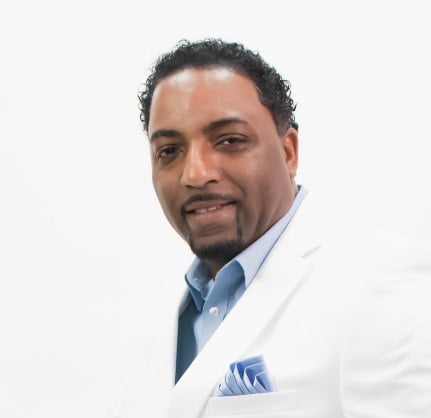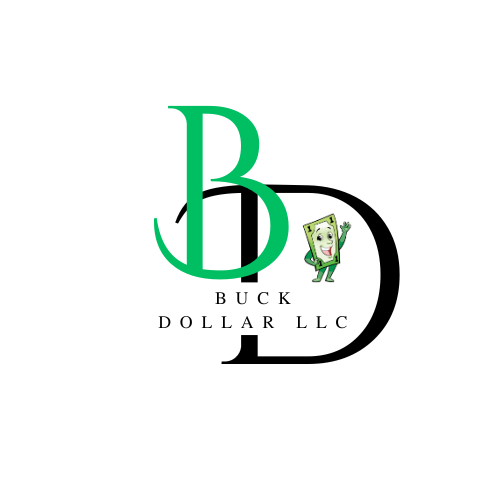Financial Literacy for Kids: A Veteran’s Mission to Empower the Next Generation
When it comes to managing money, most adults learn the hard way. Credit card debt, missed savings opportunities, and poor financial decisions are often the result of a simple root cause: no one ever taught them how to handle money as kids. That’s a problem Navy veteran Rich Holley is determined to fix. Through his mission-driven brand The Adventures of Buck Dollar, Rich is teaching financial literacy for kids in a way that’s fun, memorable, and designed to build lifelong habits. As a retired air traffic controller and financial professional, Rich has taken his decades of experience and turned it into a movement that’s helping children and their families transform their financial futures.
In this special episode of the VET S.O.S. Veteran Entrepreneur Spotlight, Rich shares his personal transition story, the motivation behind Buck Dollar, and how his mission is reshaping how we teach kids about money.
Why Financial Literacy for Kids Matters
Most school systems still don’t teach financial literacy. Even when personal finance is introduced, it’s usually too late—often in high school, just before students are thrust into the real world of debt, student loans, and expenses. That’s why Rich believes financial literacy for kids must begin as early as kindergarten.
“If we wait until adulthood, it’s already too late,” Rich says. “Bad money habits form early. Good ones can too.”
Rich’s mission started with his own story. At 18, after the death of his father, he received an inheritance. But without any financial guidance, he spent all of it in just six months. Like many young adults, he bought a car, spent freely, and had nothing to show for it. If someone had told him to invest a portion, even in companies like Apple or Nike at the time, his financial situation could have been drastically different.
This moment of reflection became the seed of a life-changing idea: what if we taught financial literacy to kids before they make adult mistakes?
The Military Path to Purpose
 Rich Holley
Rich HolleyDuring his time in the Navy, he also volunteered as a Command Financial Specialist, helping fellow service members navigate pay, benefits, debt, and budgeting. This is where he developed a passion for financial education and noticed that many people, regardless of rank or age, had little understanding of financial fundamentals.
After retirement, Rich briefly entered the civilian air traffic control industry but was sidelined by hiring freezes. He pivoted to financial services at Mass Mutual, where he encountered even more financially unprepared adults—some earning millions, yet still financially unstable.
That’s when the frustration peaked. “Adults don’t always listen,” Rich says. “But kids do. If you start them young, they carry those lessons for life.”
Creating Buck Dollar: A Fun Way to Teach Financial Literacy for Kids
The Adventures of Buck Dollar is a four-part children’s book series that helps kids learn about money step by step. Each book corresponds with a different stage of a child’s development and introduces key financial concepts in age-appropriate ways.
Here’s how the series breaks down:
Can I Have a Dollar? – Teaches young children what money is and introduces the names and values of coins and bills.
Save My Buck – Emphasizes the importance of saving and budgeting in simple terms.
Invest in Buck – Introduces the concept of investing and how money can grow over time.
Retire My Buck – Explains retirement planning and long-term thinking in a way kids can understand.
Each book follows Buck Dollar, a fun and relatable character who helps kids understand complex ideas through storytelling. Rich also appears in the books as “Rich,” tying real-world lessons to the narrative.
What makes the series unique is its creative presentation. It’s part book, part cartoon series, and part live-action experience. Rich even travels with a Buck Dollar mascot to schools, daycares, and community events, making the experience interactive and engaging.
This multi-platform approach makes financial literacy for kids exciting—not boring or confusing.
Building a Business with Purpose
 Launching the Buck Dollar brand was no small feat. Rich self-published all four books and personally handles most of the outreach, sales, and event planning. Despite having no large team or publishing house behind him, he’s sold over 2,500 copies—a massive achievement in the world of self-publishing, where most books sell fewer than 250.
Launching the Buck Dollar brand was no small feat. Rich self-published all four books and personally handles most of the outreach, sales, and event planning. Despite having no large team or publishing house behind him, he’s sold over 2,500 copies—a massive achievement in the world of self-publishing, where most books sell fewer than 250.
What’s his secret? Consistency and mission.
“Being an entrepreneur means you don’t have anyone pushing you—you have to push yourself,” Rich says. “Every minute I’m not doing something, I’m not getting paid. But when I remember the kids I’m helping, I stay motivated.”
From cold-calling schools to leading financial wellness assemblies, Rich grinds daily to spread his message. His workshops aren’t just for kids either. He also created a Financial Wellness Guide for adults—a 25-page journal that simplifies savings, budgeting, and long-term financial planning.
This guide has been used in financial seminars around the country and offers a low-barrier entry point for adults who want to strengthen their money habits. His work proves that while his mission starts with kids, it creates a ripple effect across entire families.
“Spend Some, Save Some, So You Always Have Some”
One of Rich’s core messages is easy to remember but powerful in practice: “Spend some, save some, so you always have some.” This mantra appears in every book, workshop, and speech he gives. It’s a financial philosophy that encourages balance—not deprivation.
This simple mindset helps children learn that it’s okay to enjoy your money, but it’s smarter to also save and invest. By anchoring lessons around this phrase, Rich makes financial concepts stick in a way that resonates for years to come.
Making Financial Literacy for Kids Accessible to Everyone
Rich believes financial literacy for kids shouldn’t be a luxury—it should be a standard part of education. That’s why he makes his materials widely accessible. You can find his books and educational resources at:
Website: buckdollar101.com
Instagram: @buckdollar101
Booking: Available for in-person and virtual school visits, college workshops, and speaking events
His YouTube channel includes animated versions of his first two books, making it easier for classrooms to access Buck Dollar without needing to buy the physical series first.
Whether through books, videos, or live events, Rich is focused on one thing: giving kids a strong financial foundation.
Impact Beyond the Classroom
The feedback has been overwhelmingly positive. Parents report that their children now ask about saving money. Teachers say the stories make their students excited about financial topics. And schools invite Rich back again and again to expand the conversation beyond one assembly.
Rich has also spoken at colleges, particularly to first- and second-year students, to help them avoid common financial traps like credit card debt and student loan mismanagement. By tailoring his message to both young children and young adults, Rich creates a full-spectrum approach to financial literacy.
Final Thoughts: The Future Starts With Teaching Kids
Rich Holley’s story is a blueprint for impact-driven entrepreneurship. He didn’t just write books—he created a movement. He’s living proof that with the right mission, even one person can reshape how we teach finances to the next generation.
By focusing on financial literacy for kids, Rich is planting seeds that will grow into financially empowered adults, responsible communities, and stronger families. He’s not just selling books—he’s building legacies.
So whether you’re a veteran, a parent, a teacher, or a business leader, take this lesson with you: if we want to build a better future, we must start by teaching our children the value of money, the importance of saving, and the power of making smart decisions.
Because when you teach financial literacy to kids, you’re not just changing their bank accounts—you’re changing their lives.





